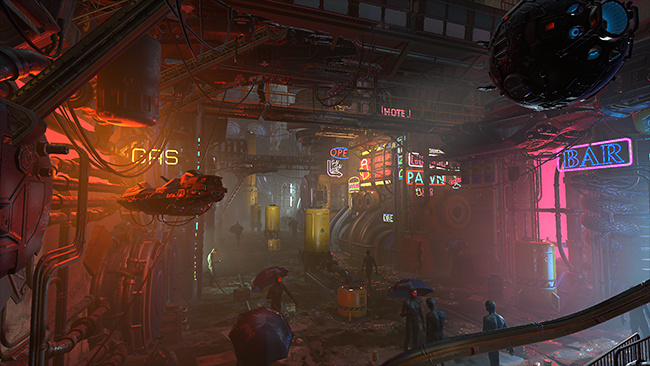Post-processing overview
Post-processing applies full-screen filters and effects to a cameraA component which creates an image of a particular viewpoint in your scene. The output is either drawn to the screen or captured as a texture. More info
See in Glossary’s image buffer before the image appears on screen. It can drastically improve the visuals of your application with little set-up time. You can use post-processing effects to simulate physical camera and film properties.
Using post-processing
The images below demonstrate a SceneA Scene contains the environments and menus of your game. Think of each unique Scene file as a unique level. In each Scene, you place your environments, obstacles, and decorations, essentially designing and building your game in pieces. More info
See in Glossary with and without post-processing.


The post-processing effects available in Unity depend on what pipeline you are using to render graphics. Each pipeline has a different way of setting up post-processing effects as follows:
| Render pipeline | Post-processing support |
|---|---|
| Built-in render pipeline | To use post-processing effects, download the Post-Processing V2 package package. |
| Lightweight Render Pipeline (LWRP) | LWRP uses the Post-Processing V2 package package, which Unity installs when you create a Project using an LWRP Template. Some post-processing effects are not compatible with this pipeline, such as Ambient OcclusionA method to approximate how much ambient lighting (lighting not coming from a specific direction) can hit a point on a surface. See in Glossary and Screen Space Reflections. |
| Universal Render Pipeline (URP) | URP includes its own integrated post-processing solution. |
| High Definition Render Pipeline (HDRP) | HDRP includes its own integrated post-processing solution. |
Note: Post processing stack version 1 is now deprecated and should not be used. For more information on render pipelines, see the documentation on Scriptable Render Pipelines.
This section of the manual gives an overview of the post-processing effects that are available in Unity. For specific information on how to use the post-processing properties and scripting available in Unity, read the package documentation on post-processing.
- 2019–05–07 Page published